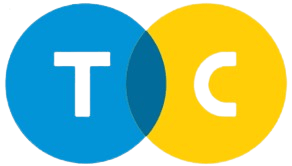Using the Creo 3D modeling technology, engineering creates a comprehensive representation of the product. Creo is suitable for the job since it provides the most comprehensive 3D modeling capabilities available, including additive manufacturing design and the flexibility for non-engineers to generate or alter designs without needing Creo expertise.
It Begins With MBE/MBD
Initially, the engineering department uses Creo’s MBE capabilities to design the product. Using the same model, manufacturing may then add any necessary information and develop the documentation required for optimal operation.
Reduces Error-Prone Manual Procedures
Therefore, rather than painstakingly drafting assembly drawings or routing sheets, employees may obtain the most up-to-date information immediately from the model. Using AR, students may even view the assembling or machining process on-screen. This capability to evaluate the right methods while conducting the operation decreases scrap and rework and enhances quality and safety.
Eliminates Paper
Instead of manually transcribing product specifications into datasheets, QA can check items against the right specifications using the 3D model. This capacity to respond quickly saves time and minimizes the quantity of scrap and items requiring rework generated by production. This again cuts costs, improves quality, decreases lead times, and boosts customer satisfaction.
The 3D model contains procedural and operational information that may be used to build production schedules. It is used to generate master schedules and time-based material needs.
Enhanced Cooperation across the Digital Thread
Creo 3D Modeling increases the productivity of planning and execution processes as well as engineering by letting all business departments utilize the same source data, independent of their degree of product, process, or engineering experience.
Moreover, it provides a common instrument for facilitating debates and communicating changes. No longer does it matter which corporate application a department uses for its day-to-day data or where the individuals are situated. Model-based production eliminates departmental and geographical barriers and replaces them with cooperation and communication.
What Is The Conventional Difficulty In Using 2D And 3D?
Using both 2D and 3D presents issues for many businesses since these tools are essentially disconnected. In order to reuse a 2D design in 3D, it must be imported into the 3D tool or regenerated. The design process is inefficient due to this separation.
Due to the gap between the 2D and 3D tools, any changes performed in the 2D environment are not mirrored in 3D. This requires the user to either repeat the import procedure or create the modification again. Consequently, despite their desire to utilize 2D as their first tool, many businesses are forced to abandon the 2D design tool sooner than they would want.
How Does Creo Layout Address These Challenges?
Creo Layout resolves the problem. Creo Layout is a comprehensive 2D design environment that includes all the tools necessary to create 2D designs. Additionally, there is full integration with 3D, allowing any 2D creations to be utilized immediately within the 3D environment.
Due to the fact that Creo Layout is based on the Creo Common Data Model, this 2D data may be smoothly integrated into Creo 3D modeling tools. Since you are directly utilizing the 2D data in the 3D environment, any changes to the 2D data are automatically transmitted to the 3D environment.
Creo Layout enables users to begin a new design by importing a cross-section from a 3D model or by importing an existing 2D sketch. Creo Layout offers the user a suite of advanced drawing tools, including guides and precision panels, for the creation of 2D designs. In addition, there are tools for organizing and manipulating the 2D geometry. To organize this design, you may utilize tools like as mirror, copy, and offset, as well as structure, tags, and groups.
Additionally, Creo Layout provides a set of detailed features. Your 2D design might include dimensions, annotations, and tables. And when the 2D design is complete and ready to be translated into 3D, you may assemble your Creo Layout files right into your assembly model.

